This Week At Angama #122
5 June 2020 | This Week at Angama | Adam Bannister
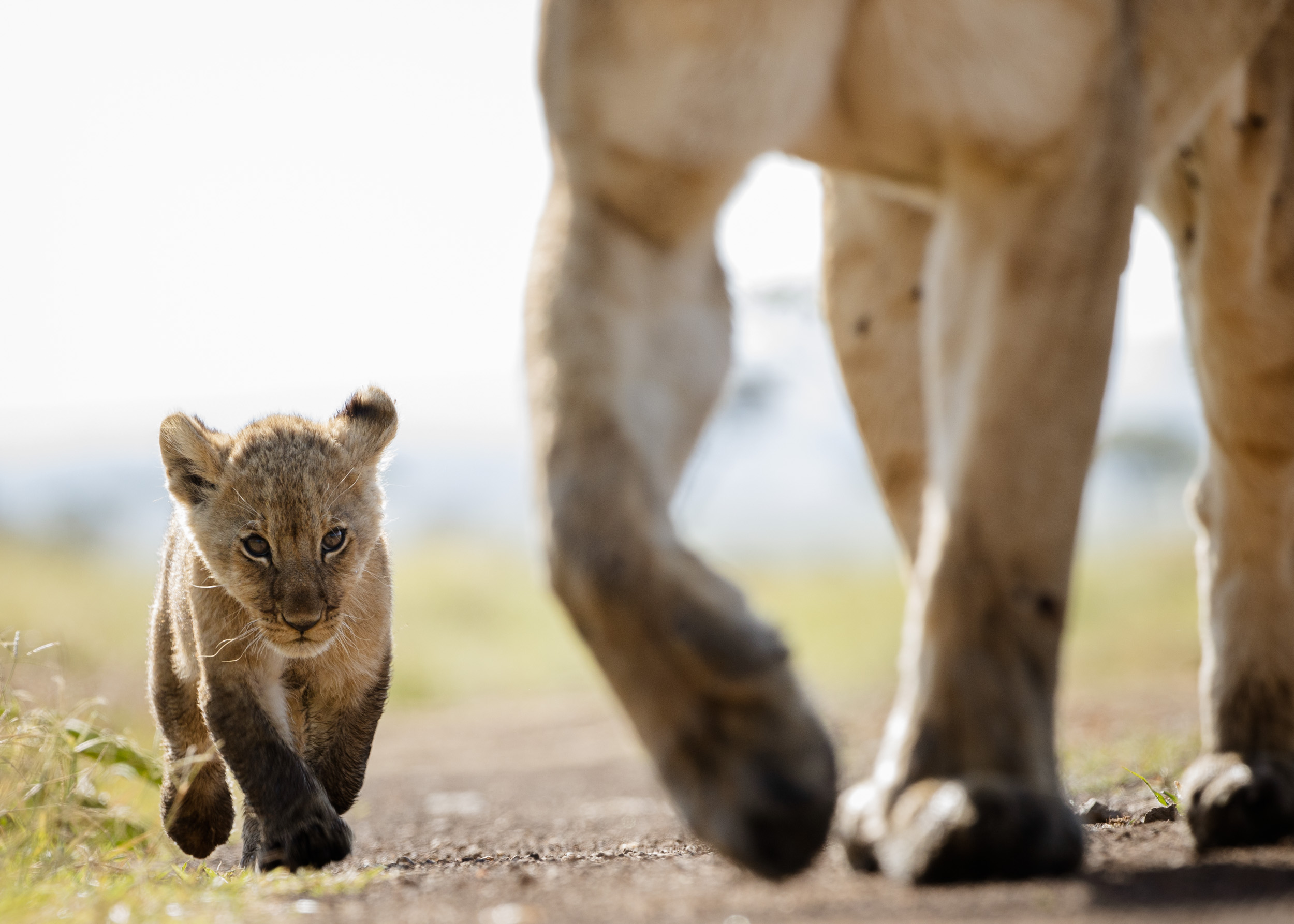
There really is nothing sweeter than spending time with lion cubs; that’s a lie – the sweetest of all feelings is finding lion cubs for the first time. That first glimpse of fluff hidden in the grass – so unexpected. Then they run away trying to hide behind their mother. You sit patiently in silence and watch from a distance as their little faces peer out from behind a bush. Gradually, they start to relax and come out into the open. Three hours later and they are out and about, trotting down the road. Enjoy a magical This Week At Angama. [f 7.1, 1/320, ISO 320, +1.0]

The ‘lead’ lioness of the Angama Pride: noble, confident and downright intimidating. Sitting in the middle of the road, resembling the Sphinx. What thoughts and memories lie behind those eyes? [f 5.6, 1/1600, ISO 500, -0.33]

Shooting directly into the golden morning light. [f 7.1, 1/160, ISO 200]
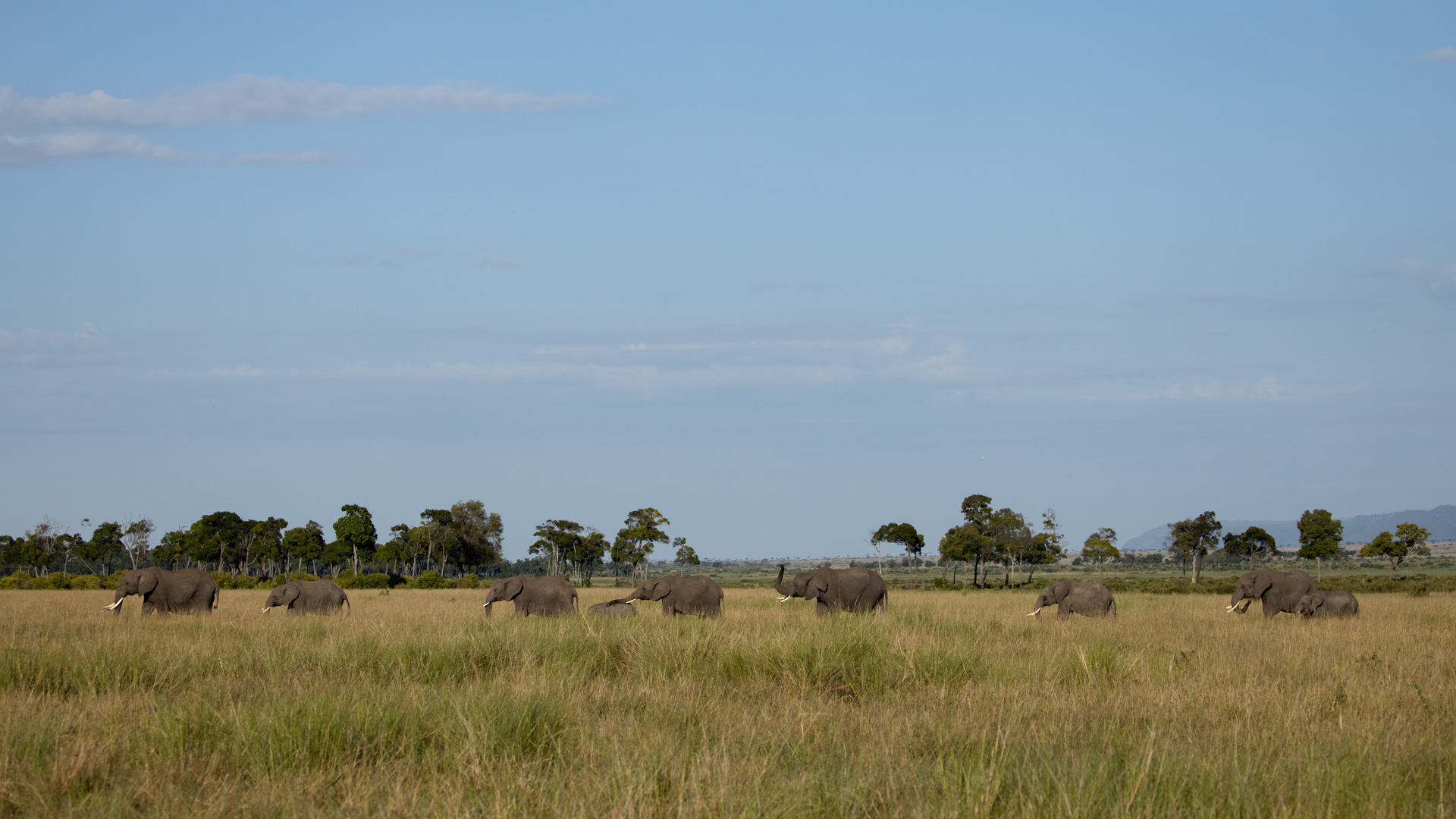
The elephants continue to dominate sightings here in the Mara Triangle. In single-file, this family makes its way across the grasslands towards the Kaburini swamplands. [f 5.6, 1/1250, ISO 200]
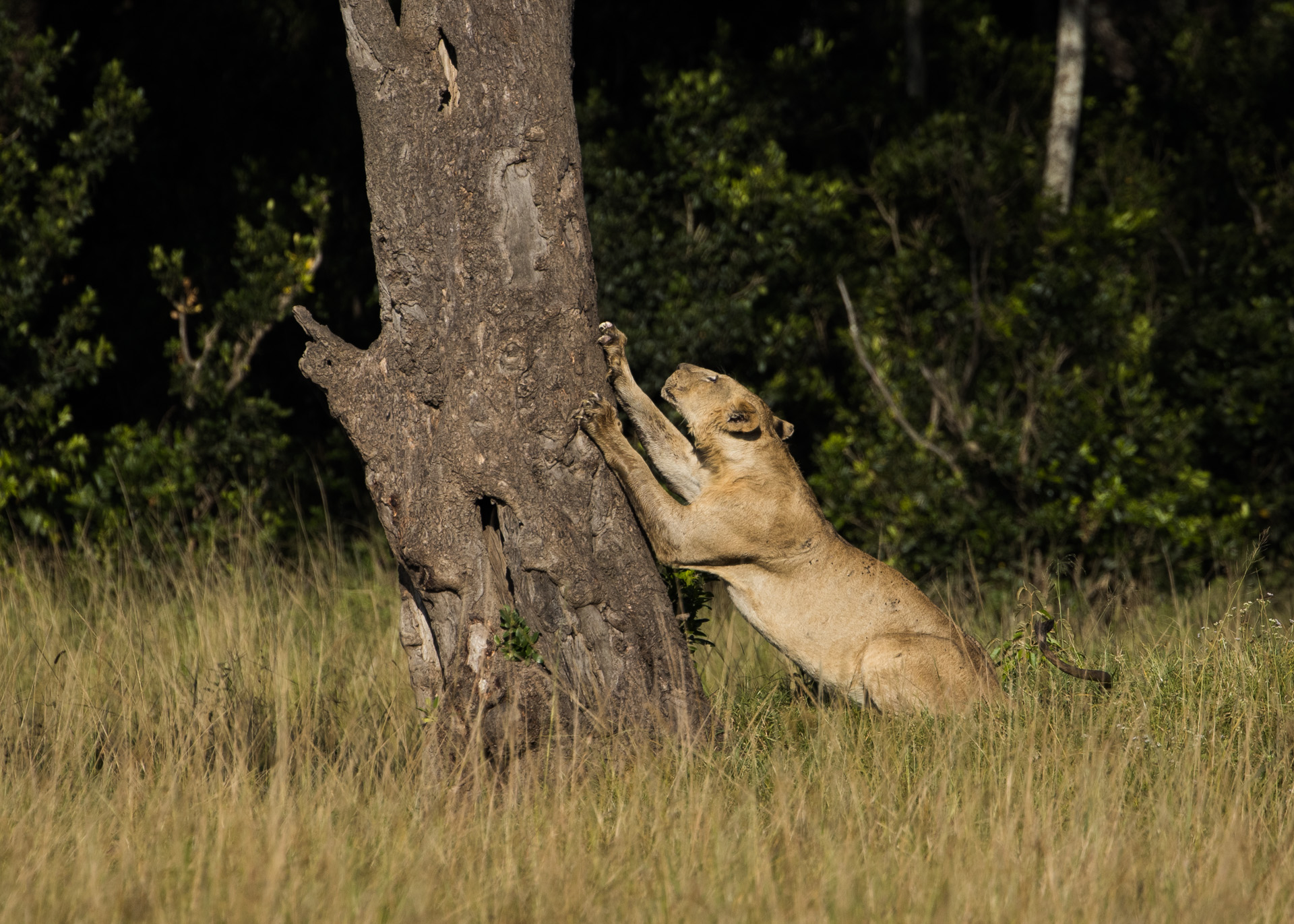
A young male lion uses a tree trunk to sharpen his claws. This is the most challenging age for a male lion as he gets kicked out of his pride and is left to wander. From this distance, I was not able to identify him, but he looked to be all alone. [f 5.6, 1/1250, ISO 200, -0.67]

Everyone has heard of Laughing Cow: “The deliciously creamy snack-able cheese wedges that started it all”. Well, perhaps in the Mara we should rename it The Laughing Buffalo. [f 5.6, 1/200, ISO 1250]
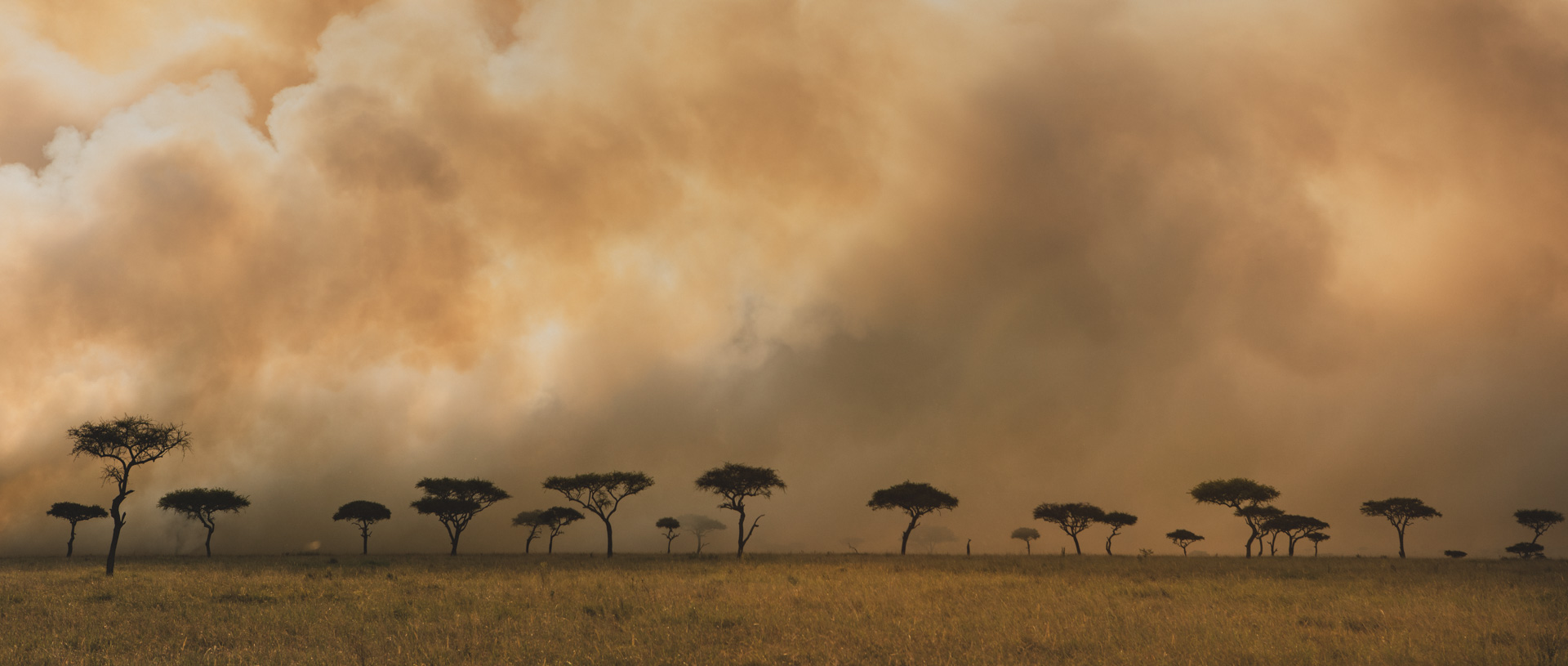
The Mara Conservancy decided to make the most of the small window without rain. Each year, specific areas are burnt to reduce the grass layer and encourage animals to move into the area. Heavy rainfall had prevented them having a big burn, but at last they managed. [f 10.0, 1/200, ISO 125, -1.33]

You have to love the drama of a fire. [f 9.0, 1/125, ISO 125, -0.33]
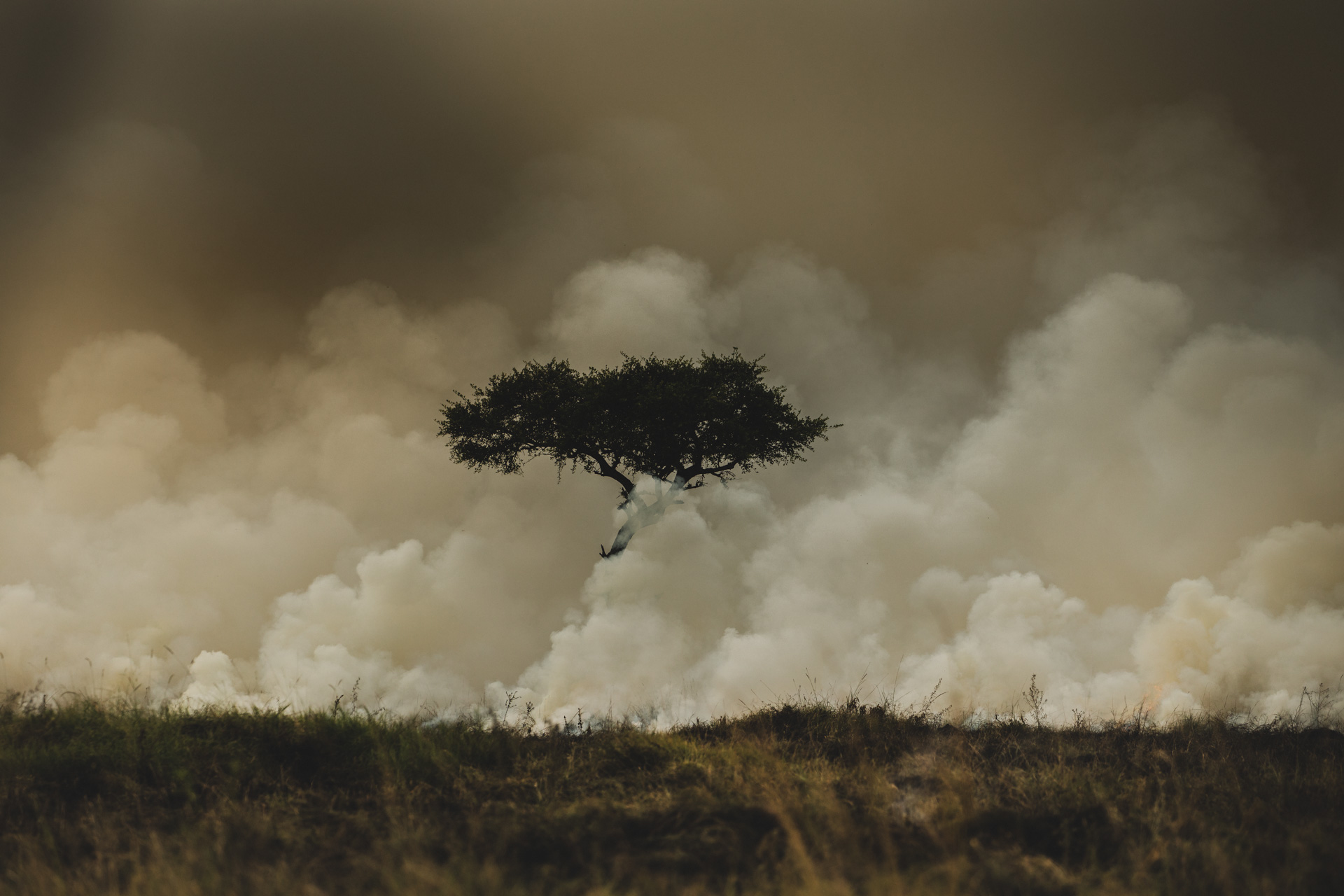
And the endless opportunities to get creative. Here I wanted to show an isolated tree being enveloped in smoke. The black-and-white conversion means you don’t lose focus and get distracted by odd colours and lighting. [f 5.0, 1/1000, ISO 400]

I loved how two portions of the fire created a natural window for me to look through. An iconic tree as the focal point and behind – the endless Maasai Mara. [f 9.0, 1/160, ISO 125, -0.33]
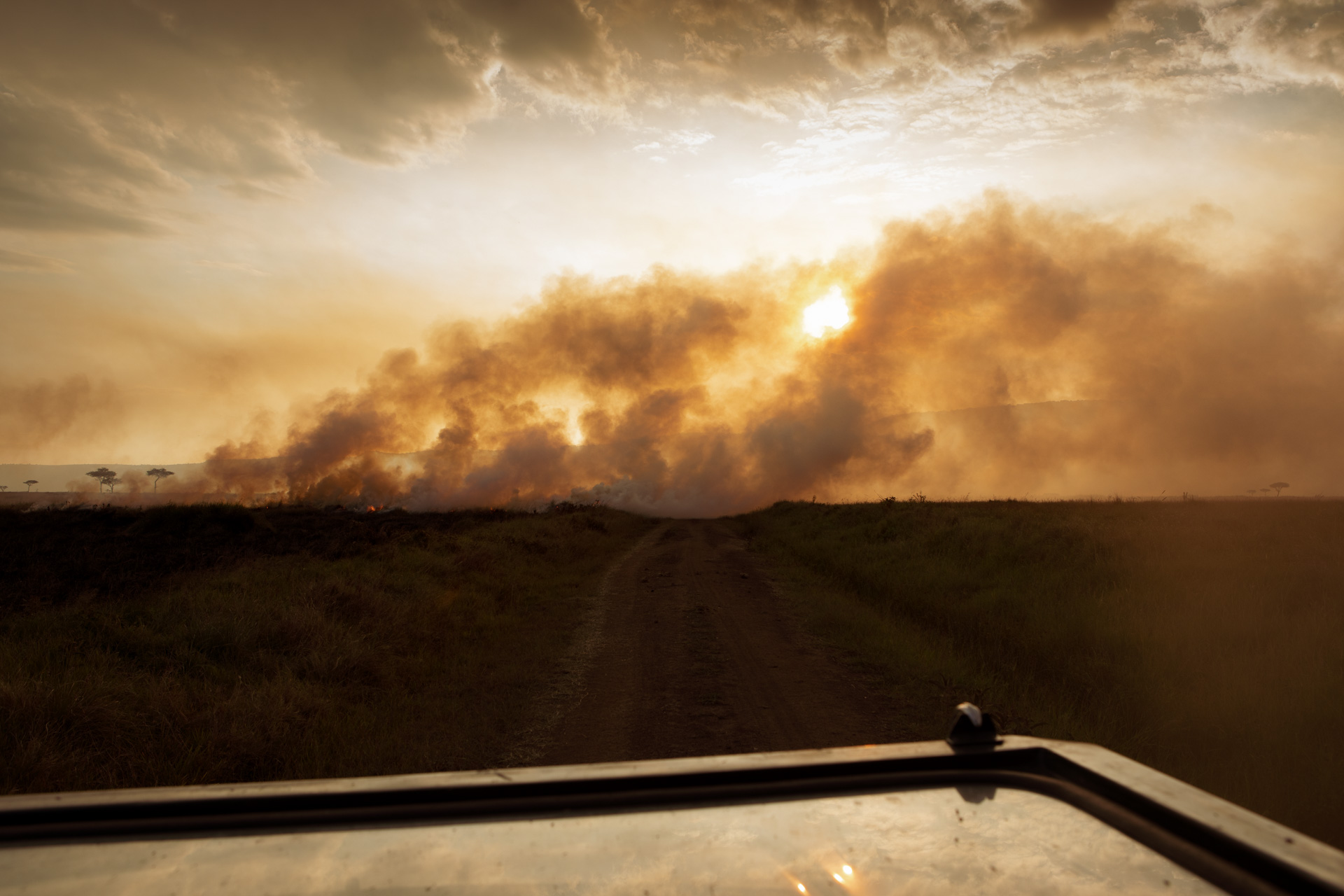
The decision to leave part of the vehicle in the foreground was intentional here, to allow the viewer to see that I was in a car. It builds on the excitement of knowing we have to drive through the wall of smoke and into the unknown. [f 8.0, 1/250, ISO 160, -1.0]

In order to conduct a good burn it is imperative that some rain follows not long after. This stimulates regrowth and new shoots of grass. Four days after the fire we had good overnight rains and this photo was taken just a few hours later. I look forward to watching the transformation. [f 7.1, 1/400, ISO 640]

You can see that although the fire passed through here, it didn’t burn everything. This is called a ‘cold fire’ – the fire moved through fast, but left a lot of matter behind. [f 5.0, 1/1000, ISO 640]
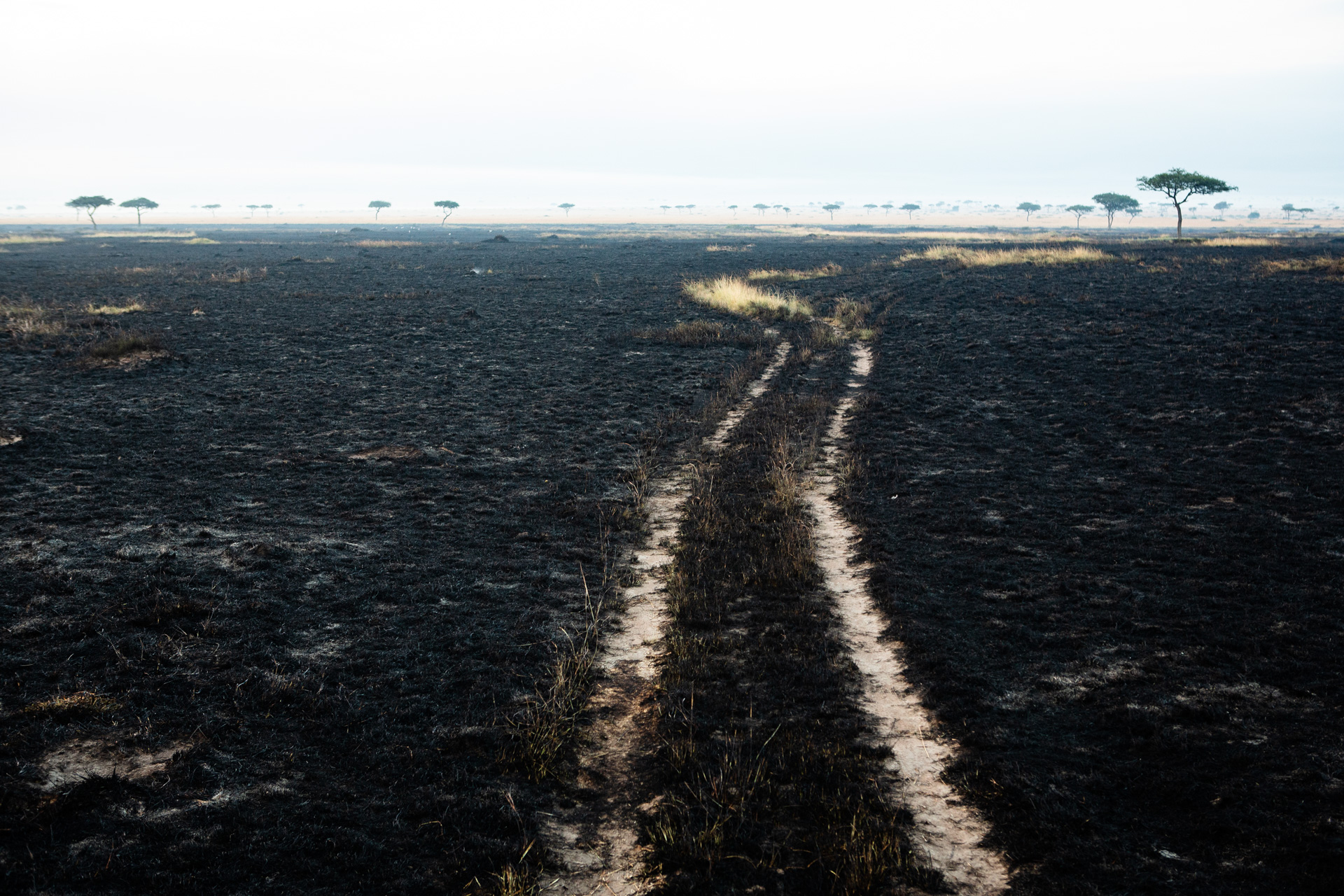
Last year, in contrast, was much drier, and this allowed the land management team to burn earlier at the end of March, and you can see that this was a much more ‘successful’ fire. In fire speak, we would call this a ‘hot fire’ as it burns at very high temperatures and moves through very slowly and tends to burn everything in its path. [f 4.5, 1/50, ISO 1000, -0.33 – photo taken 29/03/2019]
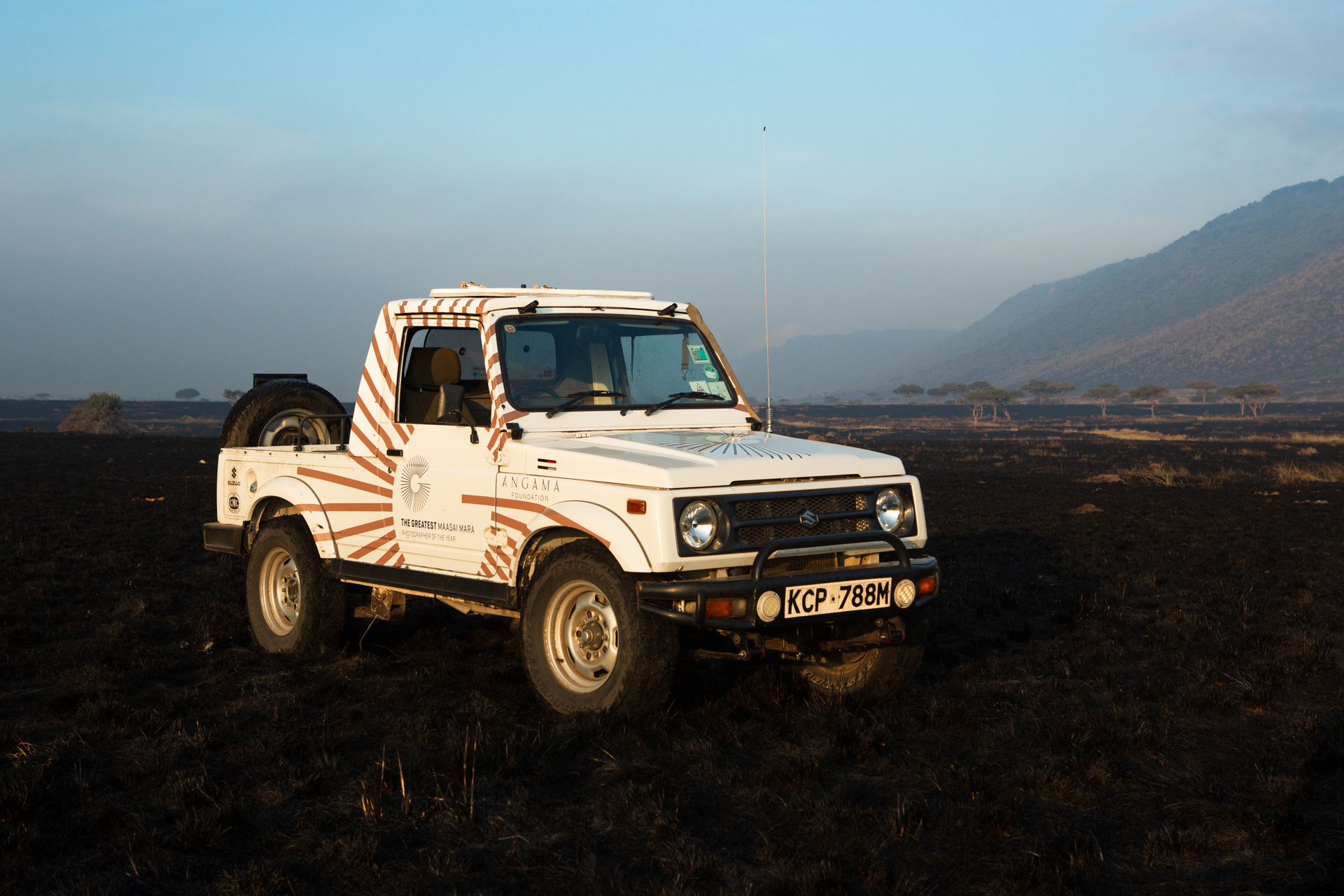
Another photo of a burn from last year to show the scorched earth. [f 7.1, 1/500, ISO 800, +0.33]

And then again from this year – massive differences in the fires, brought about by the more than double the average annual rainfall. [f 5.0, 1/400, ISO 640]

Olalashe, arguably the most handsome of the big males in the Triangle at the moment, makes his way through the grass. His eyes fixed on the Owino Pride. [f 5.6, 1/2000, ISO 400]
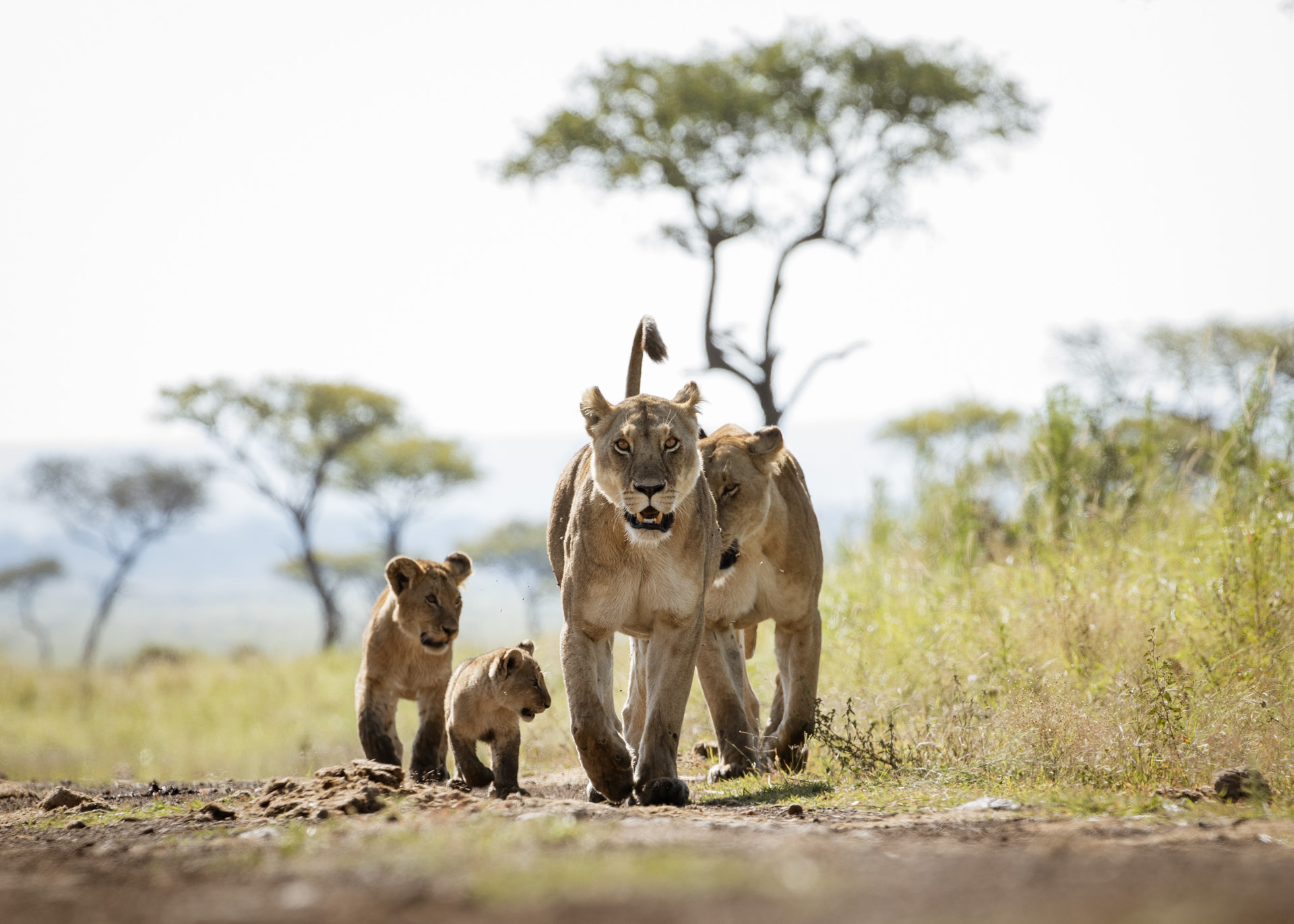
And then there is the brilliant news of the week: the discovery of two new cubs in the Owino Pride. These two little ones, thought to be in the region of two-to-three months old, belong to the lioness known affectionately as Litchi (due to her light colouring). [f 7.1, 1/500, ISO 320, +1.0]
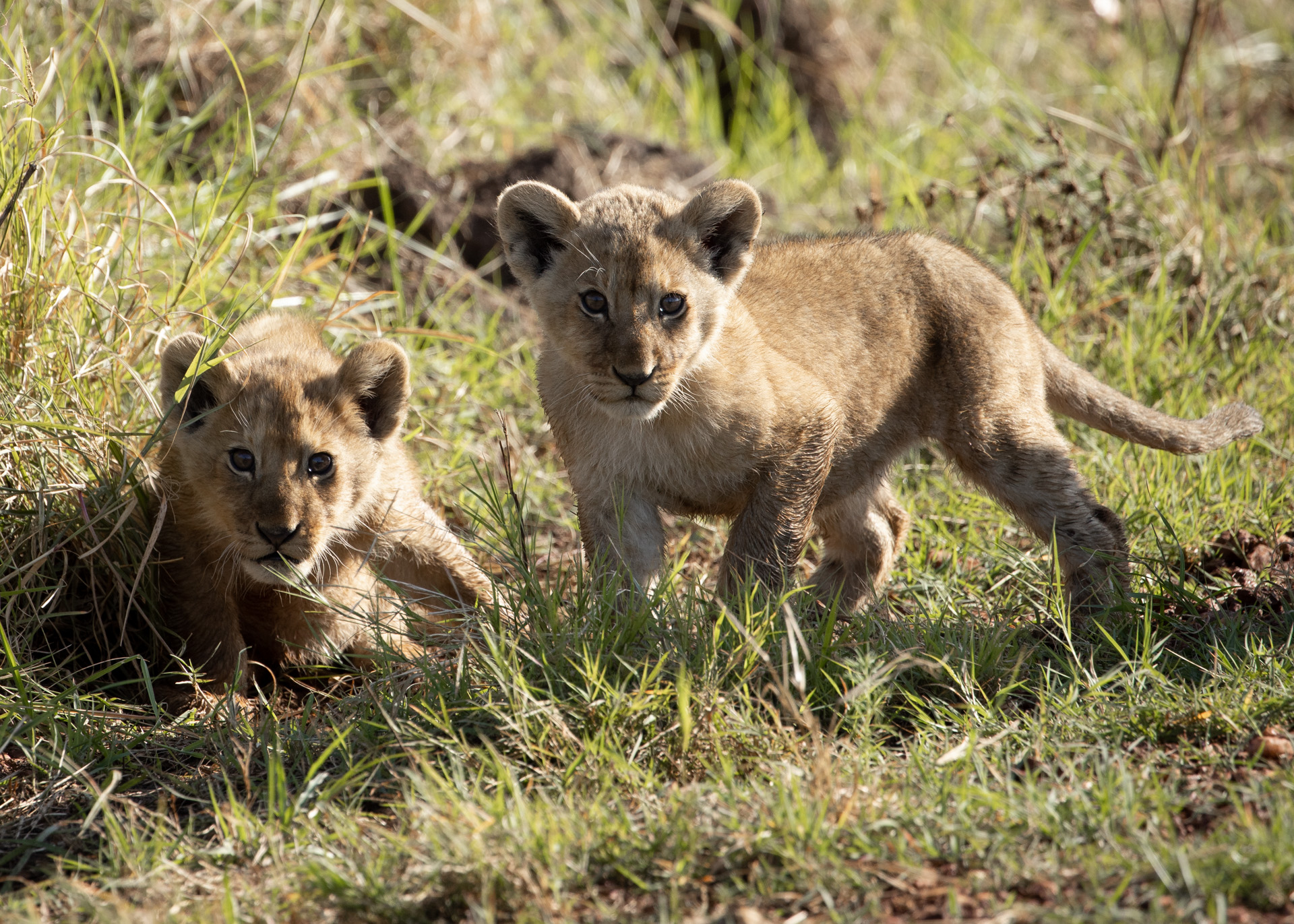
A closer look at these new delights. This is such wonderful news for the Owino Pride and at last the slightly older cub has some cousins to play with. I am hoping to spend much time with this little family over the next few weeks. [f 5.6, 1/1000, ISO 400, +0.33]
This Week A Year Ago
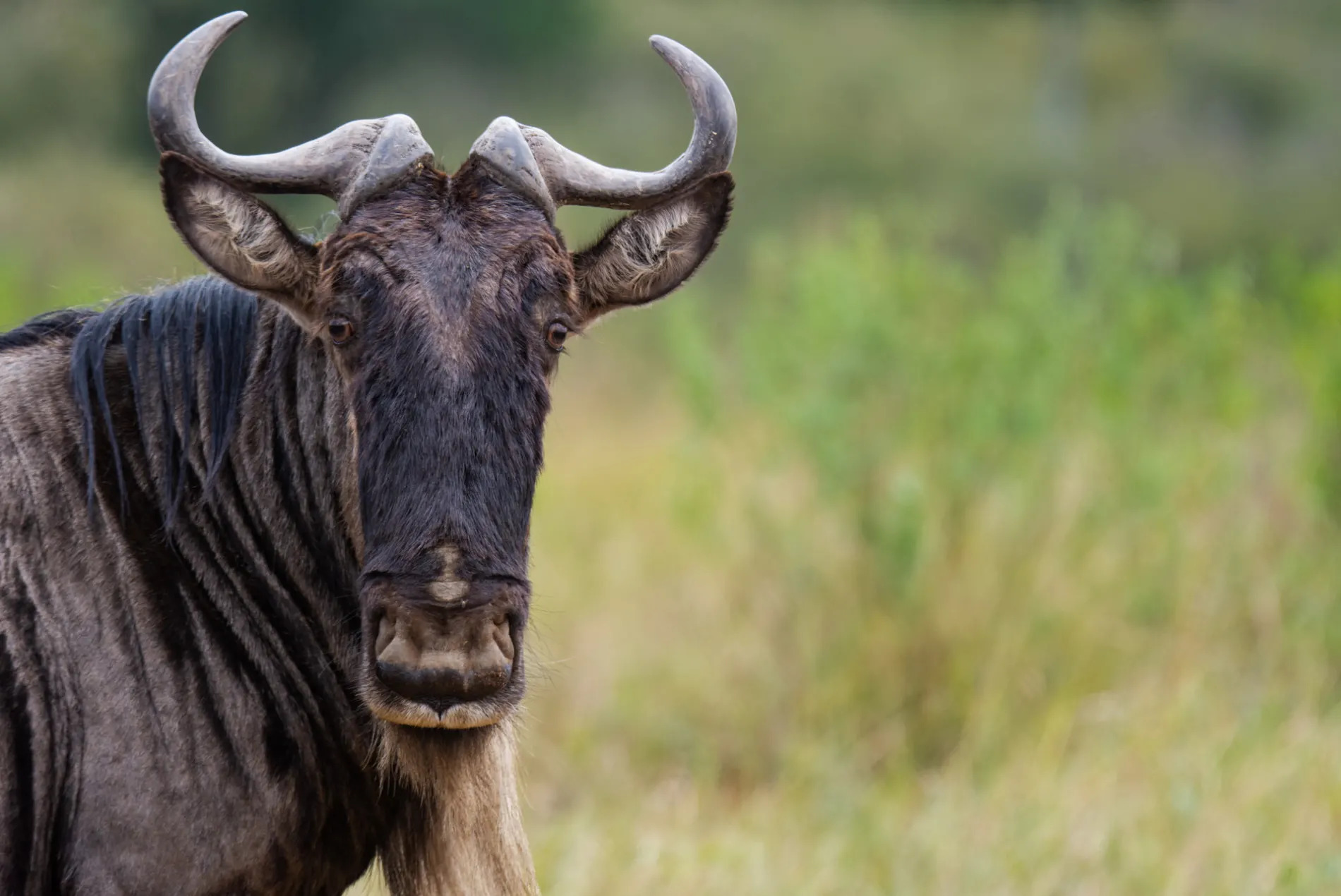 Photograph by Jeffrey Thige
Photograph by Jeffrey Thige
This week a year ago, the first of the big migratory herds came crashing through the Sand River, leaving Tanzania and entering Kenya. There is always great excitement at this time of the year, and a lot of friendly rivalry in betting on the first day the big herds will arrive. We expect them to be late this year after tremendous rains. But you never know…
TAGGED WITH: Angama Mara, Mara Conservancy, Mara Landscapes, Lions of the Mara, Fire, LIons of Angama


